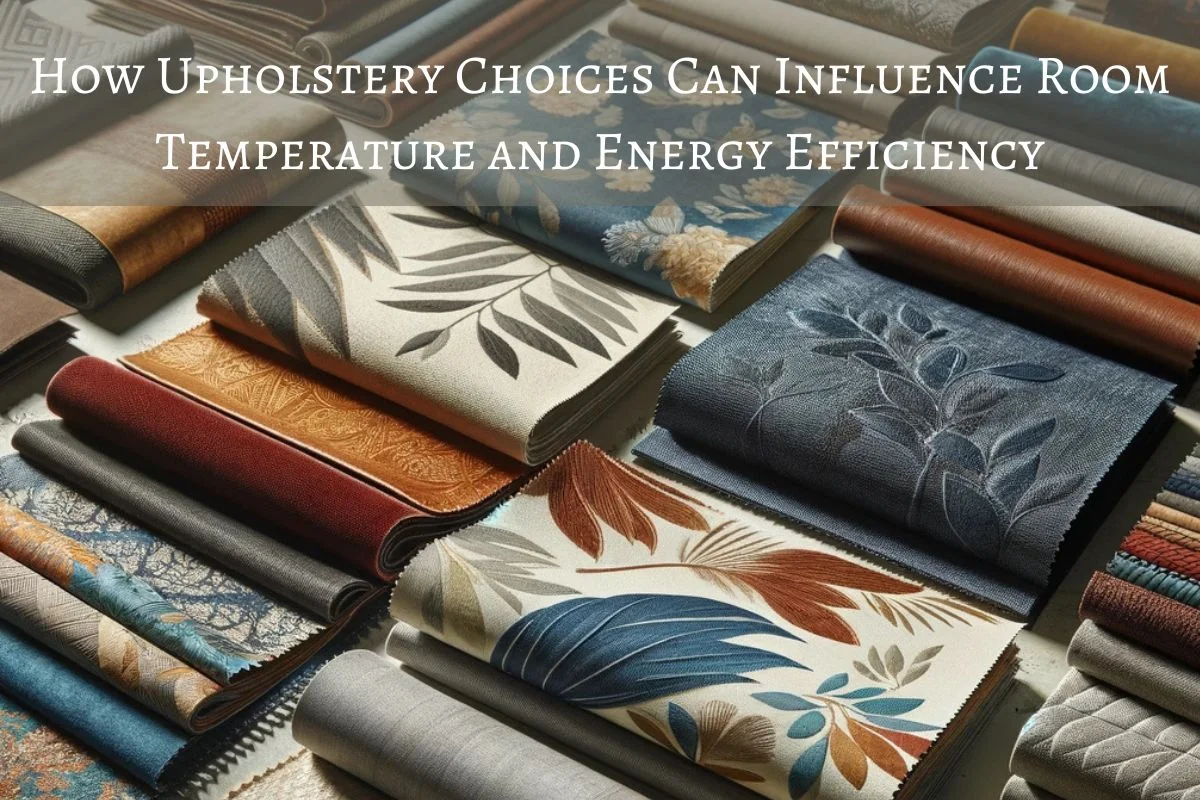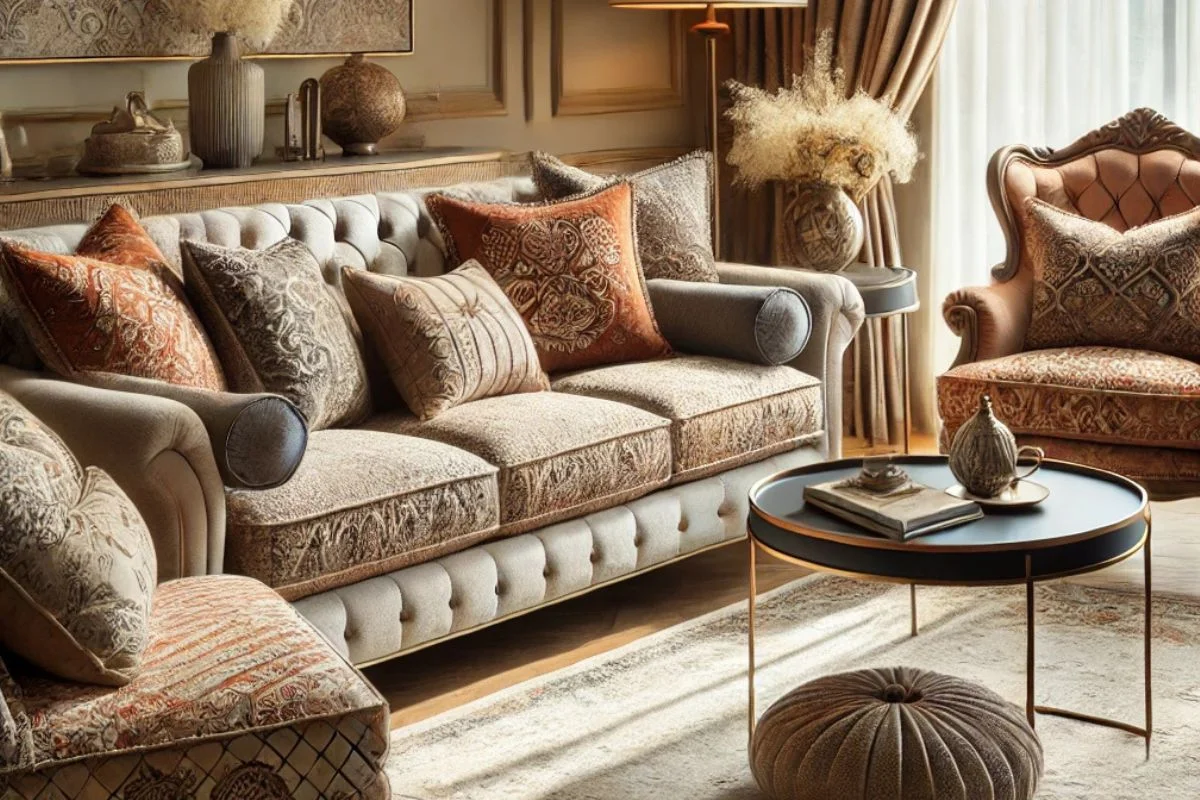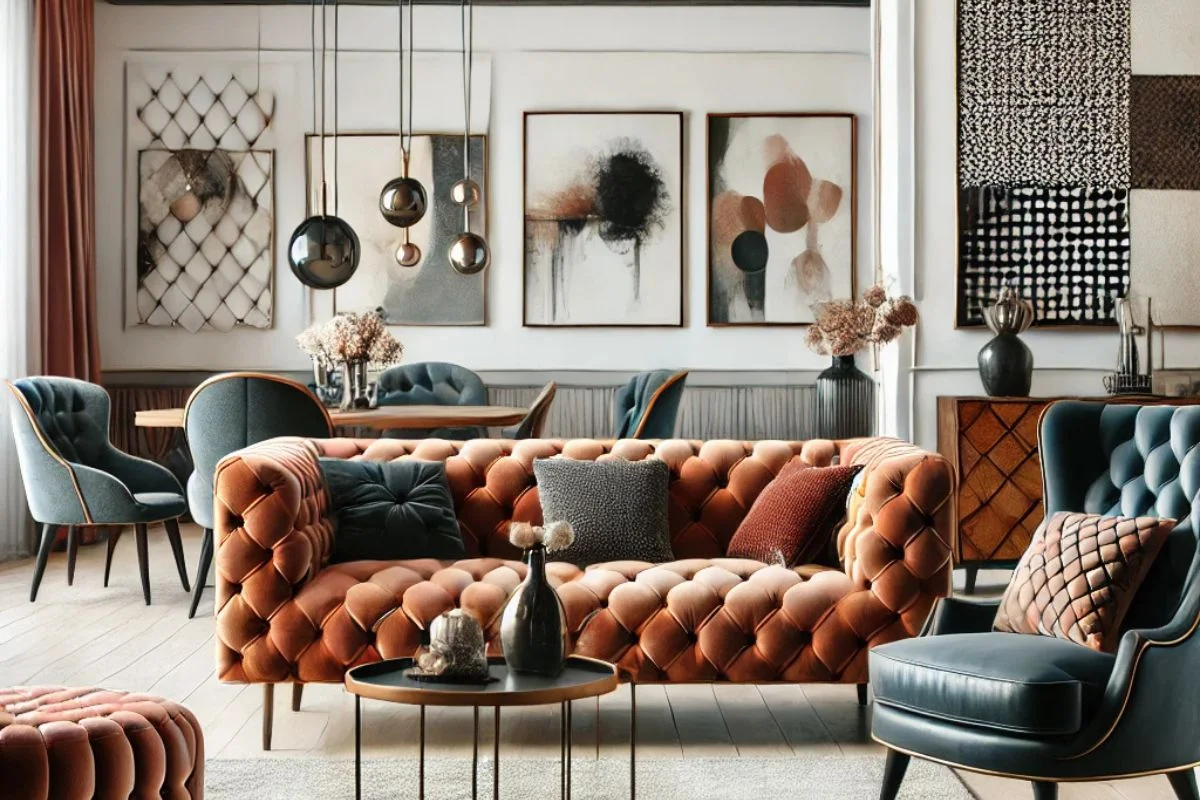Upholstery does more than just enhance a room’s aesthetic—it plays a vital role in maintaining indoor comfort and energy efficiency. Upholstered furniture and accents can impact how a room retains heat in winter or stays cool in summer, directly affecting energy consumption. Choosing the right materials, designs, and placements can make a significant difference in energy savings. With growing awareness of sustainable living, upholstery has become a key focus for eco-conscious homeowners. This blog delves into how your upholstery choices can influence room temperature and energy efficiency, helping you create an eco-friendly, cost-effective, and stylish home environment.
Role of Upholstery in Room Temperature Regulation
Upholstery acts as an insulator, helping to regulate room temperature. In colder months, dense fabrics like wool or velvet trap heat, keeping the room warm. During summer, light fabrics like linen allow airflow, creating a cooler space. Furniture with upholstery can also reduce heat loss through walls or floors. Additionally, using padded upholstery on large pieces, such as sofas, prevents cold surfaces from affecting indoor comfort. Smart choices in upholstery contribute to maintaining a stable indoor temperature, reducing dependency on heating or cooling systems, and thereby lowering energy consumption while improving comfort throughout the year.
Material Matters
The type of fabric used in upholstery significantly impacts room temperature. Natural fabrics like wool and cotton are breathable and provide excellent insulation, ideal for homes in fluctuating climates. Linen keeps spaces cool during summer due to its lightweight texture. Synthetic fabrics like polyester, while durable, can trap heat, making them less suitable for warmer climates. Blends of natural and synthetic materials balance insulation and breathability, offering versatility. Eco-friendly alternatives, such as recycled or organic fabrics, are sustainable options that contribute to energy efficiency while maintaining style and functionality in modern homes.
Impact of Upholstery Colors
Colors influence how upholstery interacts with light and heat. Light-colored fabrics reflect sunlight, making them ideal for maintaining a cooler environment in summer. Conversely, dark-colored upholstery absorbs heat, adding warmth to a room in colder seasons. Neutral shades offer a balanced approach, suitable for all seasons, while still contributing to energy savings. Homeowners can also opt for seasonal changes, using slipcovers or decorative elements like throws and cushions to complement the temperature needs. Color choices in upholstery don’t just add visual appeal—they play a subtle but impactful role in regulating indoor temperatures efficiently.
Furniture Placement and Its Influence
Where you place your upholstered furniture matters for temperature regulation. Positioning sofas or armchairs near external walls can help insulate the room by reducing cold drafts. However, avoid blocking air vents or heating sources, as this disrupts airflow and diminishes energy efficiency. Placing furniture near large windows can amplify the room’s warmth in winter, especially if paired with thermal curtains. For cooling purposes, ensure adequate spacing for air circulation. Strategic placement of upholstered furniture enhances its insulating properties, enabling better temperature control without overburdening your heating or cooling systems.
Energy-Efficient Upholstery Design Trends
Modern upholstery designs focus on both style and energy efficiency. Furniture with integrated insulation layers is gaining popularity, as it keeps rooms warm without extra heating. Eco-friendly materials like bamboo fibers or recycled polyester cater to sustainable living while providing effective temperature control. Multi-functional furniture, such as convertible sofas with insulated padding, offers energy savings and practicality. Upholstered furniture designed with ventilation-friendly materials ensures a balance of comfort and efficiency in warmer climates. These design trends emphasize innovation and environmental responsibility, aligning with the growing demand for greener homes and interiors.
Curtains and Upholstered Accents
Upholstered curtains and accents can significantly impact room temperature. Heavy drapes made from thermal fabrics block drafts and retain warmth in winter, while sheer, light-colored curtains reduce heat gain during summer. Decorative elements like upholstered headboards, throw pillows, and rugs add secondary insulation layers, minimizing energy loss. Upholstered window treatments, such as blinds or Roman shades, complement your furniture by enhancing overall thermal efficiency. By incorporating layered accents, you can regulate indoor temperatures while creating a cohesive and stylish look for your living spaces.
Cost-Effectiveness of Choosing Energy-Efficient Upholstery
Investing in energy-efficient upholstery may seem costly upfront but offers significant long-term savings. Insulating fabrics reduce reliance on heating and cooling systems, leading to lower energy bills. Durable materials like wool or high-quality blends ensure longevity, minimizing replacement costs. Sustainable options, though slightly pricier, align with environmental goals and reduce energy waste. Additionally, multi-functional pieces save space and energy, offering dual benefits. By balancing aesthetics, comfort, and efficiency, energy-efficient upholstery proves to be a cost-effective and eco-friendly choice for homeowners looking to maximize value while enhancing their interiors.
Tips for Homeowners
When selecting upholstery, consider your climate. For colder regions, opt for dense fabrics like velvet or wool. In warmer areas, choose breathable materials like cotton or linen. Use light colors for sunlit rooms to reflect heat and darker shades for cooler spaces to retain warmth. Layer with thermal curtains, rugs, or throw blankets for added insulation. Regularly clean and maintain upholstery to ensure it retains its insulating properties. Lastly, prioritize eco-friendly and durable fabrics for sustainable living. Thoughtful upholstery choices can elevate your home’s comfort and energy efficiency effortlessly.
Conclusion
Upholstery is more than just a design element—it’s a powerful tool for controlling room temperature and energy efficiency. By choosing the right fabrics, colors, and furniture placement, you can create a home that’s both comfortable and cost-effective. Sustainable materials and energy-efficient designs add a layer of eco-consciousness to your interiors, aligning with modern living standards. Whether insulating your space during winter or keeping it cool in summer, smart upholstery choices contribute to long-term energy savings. A mindful approach to upholstery transforms your home into an energy-efficient, stylish sanctuary.






